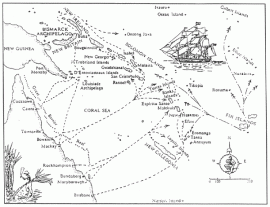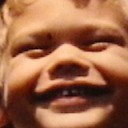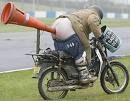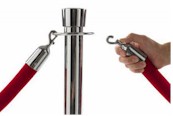Blackbirding refers to the recruitment of people through trickery and kidnappings to work on the sugar cane plantations of Australia and Fiji.
Those ‘blackbirded’ were recruited from the indigenous populations of nearby Pacific islands or northern Queensland. In the early days of the pearling industry in Broome, local Aboriginal people were blackbirded from the surrounding areas, including aboriginal people from desert areas.
Over a period of 40 years, from the mid-19th century to the early 20th century, native non-European labourers for the sugar cane fields of Queensland, were “recruited” from Vanuatu, Papua New Guinea, the Solomon Islands and the Loyalty Islands of New Caledonia as well as Niue. The “recruitment” process almost always included an element of coercive recruitment (not unlike the press-gangs once employed by the Royal Navy in England) and indentured servitude. Some 62,000 South Sea Islanders were taken to Australia.
Etymology
The term may have been formed directly as a contraction of blackbird catching; blackbird was a slang term for the local indigenous people. It might also have derived from an earlier phrase, blackbird shooting, which referred to recreational hunting of Australian Aboriginal people by early European settlers.
The methods of blackbirding varied. Some labourers were willing to be taken to Australia to work, while others were tricked or even forced. In some cases blackbirding ships (which made huge profits) would entice entire villages by luring them on board for trade or a religious service, and then setting sail. Many died during the voyage due to unsanitary conditions, and also in the fields due to the hard manual labour.
The blackbirding era began in Fiji in 1864 when the first New Hebridean and Solomon Island labourers arrived in Fiji to work on cotton plantations. Cotton had become scarce, and potentially an extremely profitable business, when the American Civil War blocked most cotton exports from the southern United States. Since Fijians were not interested in regular sustained labour, the thousands of European planters who flocked to Fiji sought labour from the Melanesian islands.
Attempts were made by the British and Queensland Governments to regulate this transportation of labour. Melanesian labourers were to be recruited for three years, paid three pounds per year, issued with basic clothing and given access to the company store for supplies. Despite this, most Melanesians were recruited by deceit, usually being enticed abroad ships with gifts and then locked up.
After the expiry of the three-year contract, the labourers were required to be transported back to their villages but most ship captains dropped them off at the first island they sighted off the Fiji waters. The British sent warships to enforce the law (Pacific Islanders’ Protection Act of 1872) but only a small proportion of the culprits were prosecuted.
The question of how many Islanders were actually kidnapped or “blackbirded” is unknown and remains controversial. Official documents and accounts from the period often conflict with the oral tradition passed down to the descendants of workers. Stories of blatantly violent kidnapping tended to relate to the first 10–15 years of the trade. The majority of those abducted to Australia were repatriated between 1906-08 under the provisions of the Pacific Island Labourers Act 1901; but there are ~20,000 descendants of the blackbirded labourers living in Queensland coastal towns.
THOSE WHO LEFT AND THOSE WHO STAYED
Even though recruitment of labourers for contract work in Queensland eventually ended, many Islanders opted not to return home. They, and their families, remained in Queensland at the time of Australian Federation in 1901.
Many still worked on farms, negotiating their wages with their employers, and often earning about the same as European employees. Other Islanders had acquired their own small farms; several operated their own businesses. With their families, they had invested their futures in Queensland, and expected to be treated the same as all Australians in the new Commonwealth.
The new federation of six Australian colonies had been achieved, however, at a price. Queensland had reluctantly agreed to end all recruitment of non-European labour, as part of the Commonwealth’s new White Australia Policy. By the end of 1906, all indentured labourers were to be deported to their home islands. There was even a real threat of deportation for those who had made their lives in Queensland for over a quarter of a century.
Ultimately, even though appeals to the British government were partially successful and those Islanders who had been in Australia for over 20 years were allowed to remain, mass deportation took place from late 1906 to mid 1908. There were many tragic stories of broken families, as some more recently arrived men left loved ones they were never to see again.
It is thought that about 4,500 South Sea Islander Australians stayed on after the deportation period. They and their descendants formed the small percentage of non-European Australians living in Australia before the White Australia Policy was finally relaxed after 1970. South Sea Islander Australians have contributed greatly to the development and progress of many parts of Queensland since the late nineteenth century; some fought in defence of their nation in two world wars; others are prominent today in public life and in the struggle for equitable rights for all Australians, no matter what their ethnic group. Their contribution to multiculturalism and racial tolerance is now, finally, being officially recognised.
However, for many years South Sea Islander Australians, like all other Australians without a white skin, were subject to intolerance and racial prejudice. This meant inequality in education, employment opportunities, public housing, and social services. They were also the victims of cultural oppression, as governments deliberately ignored or belittled the rich cultural heritage of Pacific peoples resident in Australia.
Thankfully, times have changed, as witnessed on 7 September 2000 when the Queensland Government officially recognised South Sea Islander Australians as a distinct ethnic group, at a ceremony at Parliament House, Brisbane.
However, so much cultural memory has been lost and it is only now that many South Sea Islander Australians are finally making contact with the families their great-grandparents left behind in the nineteenth century.
*******
It is hoped that this exhibition will raise community awareness of the important contribution made by those of South Sea Islander descent or background.





 the road through alcoholism
the road through alcoholism WikiLeaks
WikiLeaks Cooking with Karma
Cooking with Karma American Killers
American Killers Artistic thoughts
Artistic thoughts Best of Craig’s List !
Best of Craig’s List ! .
.



















Thanks alot for the information about our people in Queensland.
I’m so sad as many of my tribesmen have never returned from plantations in Queensland. I still wonder if some are still alive out there or been lost somewhere along the way.
What a sad history for all Melanesians.
LikeLike